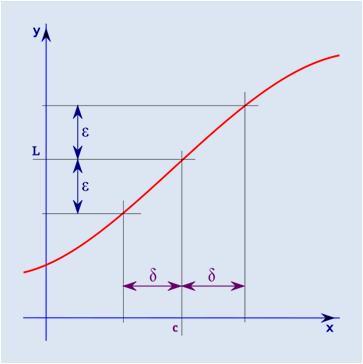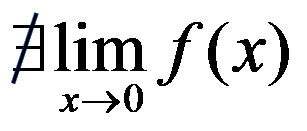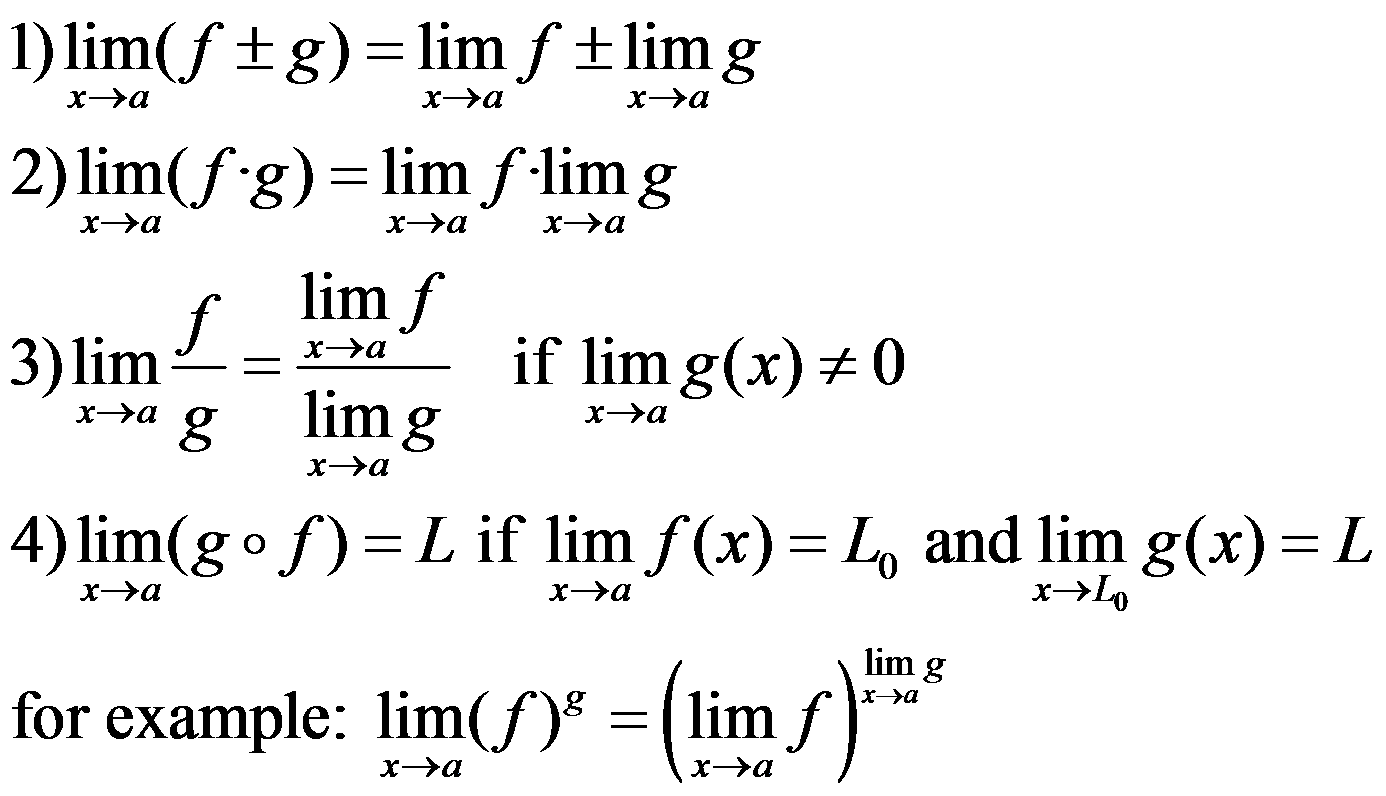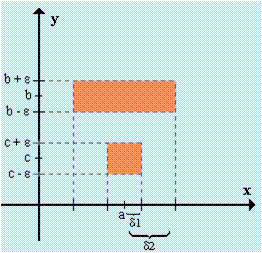Limit of a function
The limit of function f as x approaches c is L if f(x) can be made to be as close to L as desired by making x sufficiently close to c:
![]()

Or:
![]()
For example:
![]() because:
because:

You can’t always find the same limit when you approach from both sides, that’s why we define the lateral or one-side limits:
–The limit of a function f as x approaches a from the left is L- if f(x) can be made to be as close to L- as desired by making x sufficiently close to a from below:

–The limit of a function f as x approaches a from the right is L+ if f(x) can be made to be as close to L+ as desired by making x sufficiently close to a from above:

![]()
![]()

Then, in the example

Other definitions:



NOTE: Remember that when

we have a vertical asymptote

Demonstration: Imagine we have two limits: b and c and b≠c. Then


If we choose ε as in the picture there is a contradiction in b using δ1. Then b = c and the limit is unique.
Exercise: calculate the limit of f as x approaches 0 and 2, if:

Solutions

Licensed under the Creative Commons Attribution Non-commercial Share Alike 3.0 License